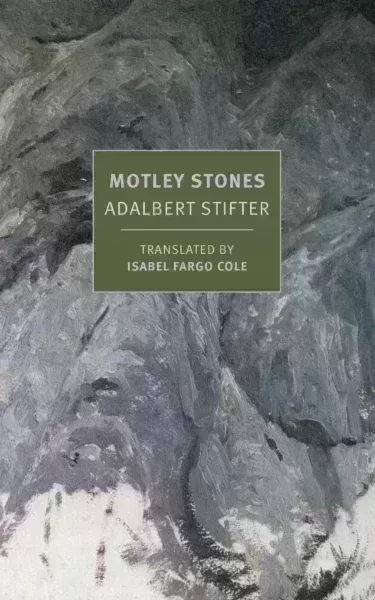
Motley Stones
Adalbert Stifter
translated by Isabel Fargo Cole (NYRB, 2021)
Floods, hailstorms, plague, fire, children lost on a mountain or trapped for years in a ruined villa — there are many types of doom within the stories of Adalbert Stifter and they follow a pattern proceeding, roughly, as follows: we are shown a timeless, orderly world, in obsessive detail. Some misfortune occurs, often a natural disaster, the result of which is that the characters (generally children) are cut off from society and must survive alone. Finally, towards the end of the tale, society is re-established. When we return to the timeless idyll, we see that it rests upon a deeper layer of chaos. Often the story functions as a cycle, so that the world described lovingly at the start is somehow conditional on the catastrophe. It is as though Stifter can only imagine a functioning, stable, bourgeois society by first picturing its dissolution. And through this double movement — towards catastrophe and then away from it — we see something of the mania of order itself.
Bunte Steine appeared in 1853; Motley Stones, Isabel Fargo Cole’s superb new English translation (NYRB, 2021) arrives with nods from Stifter’s admirers. Kafka called him « my fat brother »; Thomas Mann called him « one of the most peculiar, enigmatic, secretly audacious and strangely gripping storytellers in world literature. » Sebald, Rilke, Arendt, Hesse and Adorno also wrote praisingly about the Austrian schoolteacher.
I came to Stifter following the writer who is probably, today, his best-known advocate: WG Sebald. Sebald’s own formal, elevated style — his grave, melancholy noticing, his careful antiquated sentences, his layered, reported speech — has proved infectious to contemporary fiction writing, and remained so for some time: the work of writers like Teju Cole, Ben Lerner, Rachel Cusk, Jessica Au and Benjamin Labatut bears its mark. Often, what they take from Sebald is what he found in Stifter: an intensity of attention that seeks to find some latent violence beneath the surface of things. Sebald makes this move explicit: he looks for patterns and rhymes of history the elaborate rationality of which appears, on closer inspection, to belong to the same edifice as that which brought about the worst crimes of the twentieth century. Some of the writers who follow him, though, practice an exactitude whose attendant catastrophe remains deferred. The keenness of their attention brings the world around them into a vivid disorder, but for a moment. We glimpse a ruin that will not arrive. The intensity is never fully answered…
This article is behind the paywall. Want to keep reading this article?
Subscribe to the European Review of Books, from as low as €4,16 per month.
Already a subscriber? Sign in